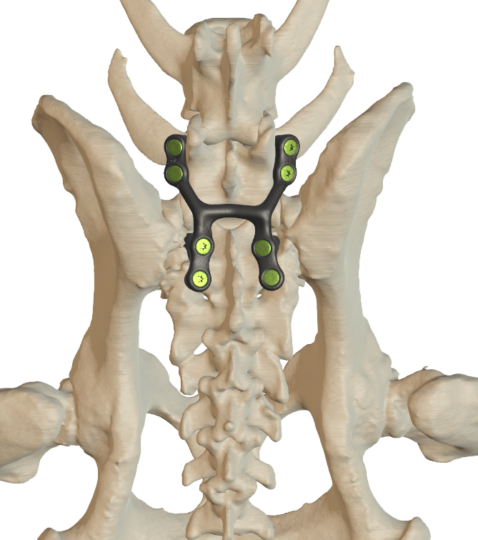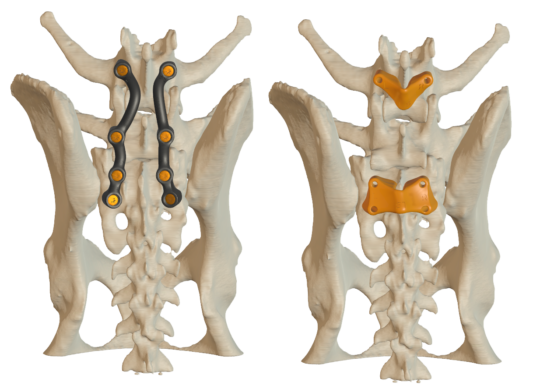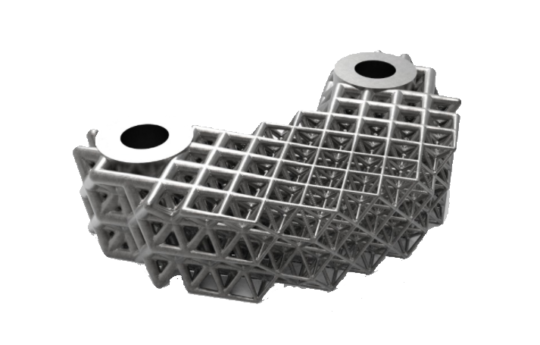Individual cages and plates
Implants for spine stabilization
Anatomical shape and an integrated approach, consisting in preliminary safe reaming of holes screws, ensure the stability and reliability of the structure.
Additional features such as polishing products, adding porous inserts and the ability to use LCP screws will help to make the design most suitable for each individual patient
- Stable construction
- Secure attachment
- Precision reproduction of the preoperative plan










Transpedical screws surgical guides
Biocompatible individual surgical guides will ensure the safe insertion of the drill for further installation of the transpedicular screws.
Guided drill insertion ensures precise alignment with preoperative planning.
- The surgery goes faster
- Improved accuracy
- Drill insertion safety






Cranioplasty
Implants for the reconstruction of skull defects.
Provides anatomical bone restoration.
Pre-planned anchorage sites allow the implant to be securely anchored to the desired bone site.
Guides for sawing the deformed parts of the skull allow you to achieve compliance with the preoperative plan.
- Restoration of the anatomical shape of damaged areas
- Safe and secure attachment of implants
- Easy to install




Materials

Ti6Al4V ELI
The best material for the creation of implants and other medical devices is currently considered to be titanium and its alloys, which have a full range of properties that meet the requirements of medicine: high corrosion resistance, sufficient mechanical and cyclic strength, and wear resistance.
Sterilization of products from titanium alloys by boiling, autoclaving, formalin vapor, burning, immersion in alcohol does not damage the metal surface.
Due to the biological inertness of titanium structures to the human body, during implantation, they are not rejected and do not provoke allergic reactions, quickly being covered with musculoskeletal tissues, the structure of which remains constant throughout subsequent life.
It can be used both in solid models and in the form of a titanium mesh, or a porous cellular structure for better osseointegration.

Photopolymer Resin
Biocompatible material, ISO 13485 compliant and designed for healthcare professionals worldwide. Such medical materials can be used for applications that require contact with the patient’s skin, mucosa and blood.
Used for the production of medical guides, fixation templates and sterilizable anatomical models

UHMWPE
UHMWPE has very low water absorption for organic polymer compounds, therefore the properties of UHMWPE do not change when exposed to water. The main properties of UHMWPE, which determine its use, are very high wear resistance, low coefficient of friction and high fracture toughness.
It is used for the production of titanium / polyethylene friction pairs

PEEK
PEEK is a synthetic material that has many advantages in CMF reconstruction surgery: strength, stiffness, chemical inertness and durability. PEEK is used for cranioplasty and facial implants.
The material can be sterilized and reused (in case of failure due to infection) and can be easily modified during surgery using surgical instruments.
PEEK, as a polymer, has an extremely low thermal conductivity compared to titanium, which already has a low thermal conductivity compared to other metals.